The anti-ship weapon is being developed by the UK and France to equip British and French helicopters.
MBDA say they achieved the milestone at the DGA Essais de missiles test site near Ile du Levant, off the south coast of France.
“The missile was launched from a DGA-owned Dauphin helicopter and reached its cruise phase while skimming low to the sea. The air crew then used images from the infrared seeker to aim the missile manually and it went on to accurately hit its target.
This latest firing builds on two previous trials which tested Sea Venom’s lock on after launch (LOAL) and lock on before launch (LOBL) capabilities, as well as its low altitude flying and autonomous guidance systems.”
Chris Harris, Lightweight and Medium Attack Systems (LMAS) team leader at Defence Equipment & Support (DE&S), said:
“This success at the third development trials represents a major milestone towards the introduction into service of the Sea Venom weapon system for the Royal Navy.”
Replacing Sea Skua, it is being designed to safely engage hostile vessels amongst civilian ones and could be used on a range of targets from small, fast-moving craft through to larger ships.
MBDA say that the Sea Venom programme has seen about 200 highly-skilled jobs sustained in Bristol and Stevenage.



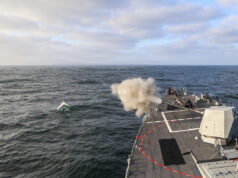
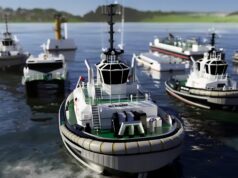

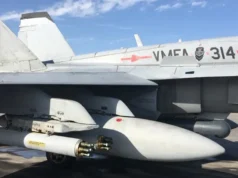

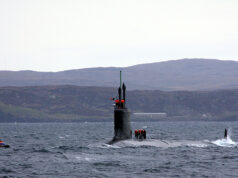
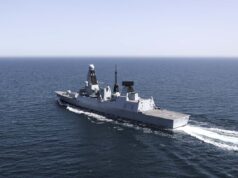

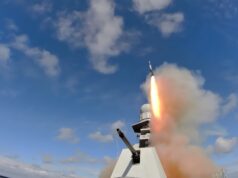
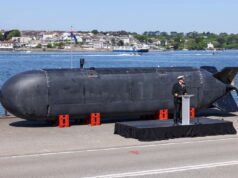

Quicker the better. I would like to read the stats on them and all ways on how they can be launched ect
Agree, the quicker the better, although I’m assuming they have yet to test fire a live round?
As with all UK missile systems the stats will be of limited use. There won’t be many and they won’t be accurate, particularly in regard to range.
At present it can only be launched from helicopter, and it will remain so unless someone funds a surface launched variant.
As Dr Strangelove told President, we have a missile gap and Sea Venom, whilst not a heavyweight missile, needs to get to RN service on time and in numbers. Still need a short term replacement of Harpoon or an upgraded Harpoon though. If not that we nead a serious F35 launched option.
There is no F-35 launched option at present. No AShM has been integrated. JSM ‘may’ arrive by 2024-25, LRASM by 2027-28. They’re the integration dates, you’d still need to wait for delivery, training, national tests, tactics, deployment etc. That would take a couple of years.
For the UK Spear is the only air launched option in town for F-35 and Typhoon in the near term. For P-8 we’ll be using US Harpoon.
For surface ships the only realistic options for the interim missile are NSM or Harpoon II. Harpoon II is the more likely as it could be integrated to RN combat systems very easily, mountings are already there and tested, and a hot production line exists. It’s a known quantity, which for an interim missile is a big deal.
Is there a video available?
Yes. It’s a movie starring Peter Sellers..
Excellent! When will we see it being fired from Wildcat?
I can see this being a great asset for 10 years or so but assume that Spear 3 could be integrated with significantly creater range and common inventory / economies of scale etc etc.
Provide a real stand-off capability.
Same contractor so should be manageable
P
Different kind of missile. Spear needs to be launched at medium altitude stand-off range and is not a sea skimmer. Sea Venom is tailor made for naval helicopter launch.
According to Eurofighter Spear 3 can be launched at low level and climb using its turbo jet
I don’t see while developing our own we can’t buy the Turkish anti ship missiles certified for NATO use for out frigates and destroyers? They are replacing their Harpoons with that more advanced missile
Turkish Delight?
No-one wants to touch anything out of Turkey with a bargepole at the moment for rather obvious reasons.
If we had to go local at the present we’d buy NSM from Norway, who we do a lot of work with, plus NSM is more advanced.
I don’t get what the obvious reason is? It contributes more 2 percent in NATO in is a key ally of Britain with trade worth of almost 20 billion a year and growing fast. Lets not EU Turkphobia blind British interest in post brexit Global Britain.
Defence partnerships are growing between the 2 nations and Britain has no major disputes with Turkey unlike the EU or US which UK foreign minister demonstrated in his recent visit to Turkey.
Turkey with the second largest army in NATO with bases in central Asia Qatar Somalia and now North Africa Libya has has a modern very fast growing defence industry that produces submarines frigates howitzer attack helicopters drones air defence missiles tanks radars F16s ( under licence ) LHD carrier , lasers on armed vehicles that shot down Chinese drones over Libya. It produces over 70 percent of its needs and growing .
It has more indigenous hardware than most NATO members and that was demonstrated recently in Syria when its first drone swarm attack and electronic warfare destroyed Syrian regime Russian made radars and air defence tanks artillery and more.. in the world first large scale drone attacks in restricted airspace which many America British Israeli experts said nothing like was done before in such coordination and scale
Im also disappointed this site rarely reports anything on Turkey and other growing powers as the world becomes more multi polar
I think the UK foreign Secretary understands this new reality when he expressed a different view on Turkey than the EU.
Also I believe BAE has at 45% stake in rocketsan was hoping someone may look at a SOM J buy for F35
Will be interesting to see if these are actually effective. Sea Skua was pretty ineffective in the Iraq war. What I read it took a large number of missiles, to actually take our small patrol boats, which means they wouldnt have a chance against anything of any size, including light Corvettes upwards.
Like everything technology advances my mobile phone was just like the sea skua missile 17 years ago …..it didn’t do ? . But You should see what my mobile phone does now ??
That sounds like a lethal phone – Huawei?
Quite the opposite.
Skua was extremely effective.
Its availability and hit rates where in the high 80%. The Battle of Bubiyan has the figures with something like 10 ship kills.
Earlier engagements by Lynx aircraft did have issues due to the very low freeboard of the vessels attacked. The missiles basically overflew instead of hitting them as the vessel free board was less than the skim height. Skua has programmable skim heights and came in a limited number of 7A variants that had a really, really low skim height, far lower than the regular versions and designed for hitting these type of targets. (Hindsight is 20/20.)
During this encounter the official figures did not include the one missile that I know of that went rouge when launched. It dropped off the helo , boosted away and then went ballistic instead of sea skimming! No body could be bothered to raise a S2022 so it went unreported for a few months until BAe heard about it during a ships “liaison” visit to the Farnborough Airshow.
Whilst the USN could use Penguin on SH60s it was fitted for and not with (sounds familiar) so it was the Lynx and Sea Skua combos that where the most effective weapon for killing small boats, PCs and Auxiliaries.
Agree with Gunbuster, it was the only effective small ships missile used during the Gulf War. It had a serious effect at the Battle of Khafji, destroying a force of patrol boats and amphibs. The days after they were used to remove the remaining Iraqi and captured Kuwati patrol boats. The combination of Lynx and Sea Skua should not be underestimated, it proved to be a very effective package.
I have no idea on the hit rate but what I read was that there was many many times the number of missiles fired Vs ships sunk, so they either missed or didn’t do sufficient damage to do the job.
You dont need to sink something to make it mission ineffective. if a vessel sustains enough damage so that it cannot continue with its mission, that’s good enough.
In the Falklands the Exocet that hit Shefield did not sink her ( she floundered under tow later) but it did enough damage to make her mission ineffective.
If anything a mission kill is better than a sinking, the same way that causing a casualty on a battlefield is better than a clean kill, they suck up valuable resources to look after. If your dead your dead. If you are injured you need evac possibly with a helo which needs pilots and ground crew, medical support, field hospitals etc.
Combat isnt nice but you take the shilling and take your chance.
Ineffective?? It was bloody brilliant.
Sea Skua was a superstar in Iraq. The coalition had nothing else comparable. Some of the vessels being targeted were vessels that are incredibly hard to sink (Polochny Class LST’s) and it pretty much wiped the Iraqi Navy out. USN A-7’s and RAF Jags got involved but only after Lynx had hit them with Sea Skua from range. That reduced the chances of SA-7 and other air defences being active for the A-7’s dropping Rockeye and Jags firing CRV-7.
With respect, I don’t know who you must have read.
Was the Sea Skua the first successful anti ship attack during the Falklands?
That was the first use of Sea Skua.
But if you’re talking about guided anti ship missiles you need to go back to WW2 and the HS293, add in the 60’s and use of the Styx to sink the Eilat, Styx use in 1973, the Israeli’s using Gabriel to counter, the 71 Indo-Pakistan war and use in the Iran-Iraq war starting in 1980.
Skua was still not fully cleared for service in the Falklands but it was used none the less. AS 11/12 was used from Wasps. Wire guided and pretty useless.
Out of the two I take Skua every time and I have maintained and looked after both missiles. From stowage in a dedicated wheeled pallettrolley with a integrated brake system, with built in control surface stowages, easy handling in the magazine, loading to the aircraft and preping for use, it was all easy and straight forward. Somebody for a change thought about it when designing it.
Not just thought about it…talked to the users.
Hopefully MBDA have followed a similar path this time.
Four Sea Skuas were fired against an Argentine patrol boat, 2 hit damaging the craft and killing 8 crew. The boat still managed to get back home.
I see also the Wildcat is getting a new integrated wing which will allow up to 4 Sea Venom missiles to be carried or 20 Martlet or mix of both. However my opinion is the UK needs a longer range anti-ship missile in the this day 20km would put the Wildcat at risk.
Depends on how it is used. If the Wildcat id flying up high say a 1000ft, then its easy game. If it approached fly near sea level , so long as it has an idea of where the target is, it can safely fire from beyond the horizon. However, it will need to pop up above the horizon every now and then, to check on the targeting and to get a data-link to the missile. Once the target is established it can hide behind the horizon again.
The Wildcat has a number of sensors that warns the crew if it has been locked onto by radar, or if a missile has been fired at it. They will be able to launch countermeasures to decoy a missile (depending on type).
Damn, what happened to the edit function?
I suspect the need for Wildcat to pop above the horizon also goes away in the future with the addition of AEW UAV. The UAV can stay high and well out of range of the target’s AAW while providing missile targeting and relaying the data link control, while the Wildcat stays below the radar horizon.
I guess ultimately it depends on the height of the enemy radar as that generally dictates range of detection for low level objects (ok I’m assuming the enemy radar is also powerful enough). 10 meter antenna height gives a radio range of approx 13km. I would imagine the T45 with its radar height could track the Wildcat before it was in range. Of course that’s a mute argument.:)
If you seriously think Sea Venom is only 20km range I have a bridge I can sell you…Sea Skua was 25km+ and there is no way that with modern propellants that the RN would have spec’d a missile with shorter range as a replacement 40 years down the road. I’d expect at least 40km range. Given the fraction of weight devoted to the rocket motor probably more.
Also the sales sheet for Sea Venom as good as tells us this by stating “Safe stand-off – aircraft can turn away from the target post launch to remain outside surface to air missile range.” That is not a credible statement to potential customers for a missile that has say 30km range, much less circa 20km range.
I can only go on what’s published which is an estimated range of 20km. If you can point me to alternative info happy to take a look.
Case of paper theory over real world. RN were practiced at ulitising their helos relatively close-in against even larger targets to provide refined guidance data for missiles like Harpoon.
So are you saying we don’t need a longer range anti ship missile?
No, that’s not the conclusion to draw re future a/s missile.
In this instance, I’m saying the helos themselves often prove not so soft a target as may be supposed. Providing your tactics are sound, established through exercises, wargaming and just plain constant sea experience you can achieve plenty that data sheets alone aren’t going to give you. That’s not a carte blanche for complacency, though.
Ok understood thanks for clarifying
Again the Martlet/Venom load out is driven by lessons learnt in the Gulf. To counter the use of small fast boats that where not worth the use of a 7A variant Skua, the Lynx had the 50cal M3 gun pods fitted. Martlet will do that job in future.
As with most things on a Lynx at the time gun pods where an optional extra. A Gulf Mod Lynx ( Pre the final Mk8 version ) could carry in various configurations
M3 gun pods Port and Stbd
Yellow Veil Jammer pod (only on one side of the aircraft due to its size and weight)
Skua depending on other fits
Depth Charges
Sting Ray
Damon Camera- fitted in the aft equipment bay below the tail looking down and used for mine hunting.
Kingfisher TI camera on the weapon sponson
Door gun
M130 Chaff and flare launchers
IR jammers
That was in conjunction with the regular Sea Spray radar and orange crop ESM fits.
The very high Take off weight in the climate of the Gulf meant that the operating/launch and landing SHOAL was really small, a couple of degrees port and stbd of ships head and only at certain over the deck wind speeds.
Later LYNX and now Wildcat have more powerful engines and the weight restrictions are a lot less but the Gulf Mod Lynx was probably the pinacle of what you could do with the aircraft.
“while skimming low to the sea”
Look at the picture. Its about to hit halfway up an ISO container which is stacked on another container, placed on a barge.
My guess is the height is 7 meters. OK you can pick where its going to hit via the data link as it would appear to have been done here, but 7m above sea level puts it hitting the bridge area on a target.
lets hope the skim height is way less than that!
Pretty sure it is GB when they showed the pic of the last Test it looked like it hit the join between 1st/2nd row of containers. Also isnt venoms skim height preset before launch?
In this test, the pilot can select point of impact. As a ‘first’ they propably wouldn’t try to be too clever!
Exactly you work up to the ideal (or is it low in this case), this is about gaining as much information as possible, not how low it can fly I’m sure at this stage.
Whilst this is a test and not a real life shot, the height of the missile above the water in the picture would make it and easy target for a CIWS.
Of course the skim height in real life would be lower and you would in all likelihood go for a hull hit midships to maximise the chances of a mission kill. it will be interesting to see a warshot test at minimum skim height against a representative target.
Our reputation for building smaller, highly effective families of missiles appears second to none. This one fully endorses that tradition.
A Wildcat loaded up with a couple these, plus maybe Martlet in the Gulf, will reclaim our on front foot perspective with regard to helicopter ASuW.
A lot of credibility is riding on Wildcat and Sea Venom. Wildcat radar can detect an adversary well beyond the range of most AShM and most AA missiles. Sea Venom has a beyond the horizon range and can be steered precisely from below the horizon onto the mast of an enemy ship. As I understand things if it works this means a Type 31 could disable a more heavily armed frigate….assuming it can launch its Wildcat and it can avoid being shot down. If Sea Venom / Wildcat system has a lock on after launch capability the target might not even see the helicopter before it has to deal perhaps with a salvo of 4 missiles.
Sea Venom has a number of modes such as, lock on before launch, lock on after launch, third party designation and third party control. There is also a future option to equip it with a laser designation sensor for even more precision targeting. Unlike Sea Skua it can also attack land targets with confidence ( I know GB will mention Skua has been used against land targets, but due to the semi active radar homing it was more luck than judgement).
The missile can as already be stated targeted at various parts of a ship. With the programmable semi-armour piercing, blast and fragmentation effect warhead. It can be programmed to detonate on impact or after it has passed through the side of the ship. MBDA have made a big deal about its capability of attacking the ship below the water line. Sea Skua was good, But Sea Venom bring a whole new level of capability, that few navies will have. It’s a shame that they aren’t looking at integrating it on our Merlins as well.
I agree. Skua was never supposed to be used against land targets. It was a Hail Mary shot against a vehicle if I recall correctly.
Regarding Merlin integration, it has always been a big question why Merlin did not get a suitable ASM. Plenty of other navies use helo launched missiles even heavyweight Exocet or Sea Eagle.
Sea Venom would be an ideal weapon especially now as the homing system is passive and does not require an illuminating radar. Paired with a Merlin it would be a game changer on a T26/ T23 Merlin combo.
Wildcat sea venom & martlet are a littoral focused solution unless sea venom has about 4 times the quoted range its pretty useless against ships that have long ranged SAMs. What we lack is a proper anti-ship missile & in my view this should go on Merlin if we are trying to keep costs down marte er is already being integrated on Italian merlin helicopters. If we want something more technical JSM/NSM would be the choice it is also I believe possible to mount underwing on F35b. To be honest I’d rather have this than ISSGW as ship to ship engagement is a lot less likely than using an air launched weapons considering the RN suffered heavily from Exocet in 1982 you would have thought they’d have taken this on board.
Wiki has the range of the NSM missile as about 100 miles. Wildcat has a range of over 400 miles, so lets say a maximum radius of action of around 200 miles. Sea Venom probably has a range of about 25 miles. So the maths says a RN frigate with Wildcat and Sea Venom comfortably out-ranges an adversary which might deploy an AShM. Seems to me this is why the lack of an AShM is not the disaster it is sometimes painted. Intelligence as to the whereabouts of the enemy is the key.
NSM’s range is only 100 miles in a lo-lo-lo attack profile. If it goes to medium and high level on the approach, then switches to lo on the final run it can go out to 250 miles. The key as ever is to locating the target.
“There is also a future option to equip it with a laser designation sensor for even more precision targeting. ”
Given the ease with which this can be done, it should have been in from the start.
“Unlike Sea Skua it can also attack land targets with confidence”
MBDA and the RN are very careful to refer to it as ‘coastal targets’ rather than land. Read into this what you will, but I’m interpreting it as due to the nature of the missile approach and flight you can only really engage targets in line of sight.